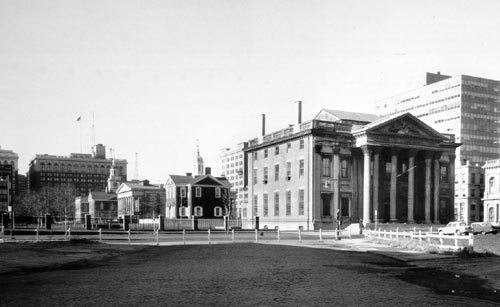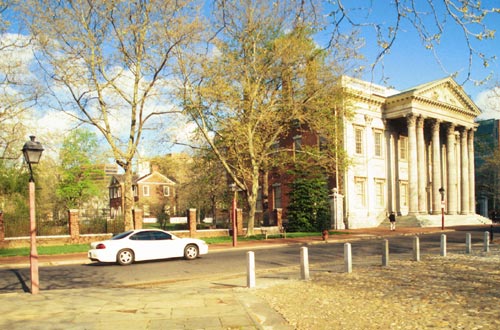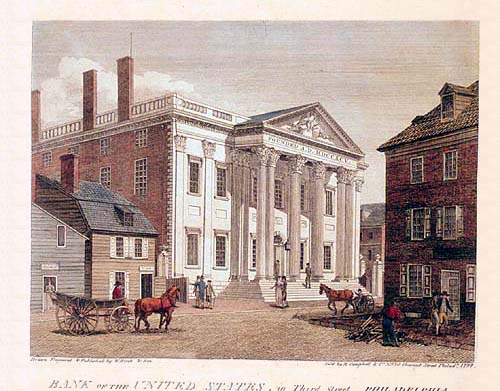Plate 17: Bank of the United States, in Third Street

View in 1960

View in 2000
Engraving
The Bank of the United States was created by Congress in 1791 to control currency and credit. Its first home was at Carpenters' Hall, where it rented space until 1797, when it moved into its own building, erected between 1795-97, from designs of Samuel Blodgett, Jr. The original plan called for a building constructed entirely of marble, but to economize, brick was used on the rear and sides. Claudius F. Le Grande, a French sculptor working in Philadelphia (1795-1801), carved the mahogany eagle in the pediment and other architectural features. After the United States Congress failed to renew the Bank's charter in 1811 the building was sold to Stephen Girard, a merchant, banker and philanthropist, who conducted his private banking buisiness there for the next twenty years. Girard helped to finance the United States in the War of 1812, and to fund the Second Bank of the United States in 1816. He died in 1831, the wealthiest man in the country, bequeathing to the city the bulk of his huge estate of over $6 million (including the First Bank building) in trust for the improvement of the City and for constructing and endowing a home and school for poor male white orphan children. The recipient, Girard College was opened in 1848. (In compliance with a U.S. Supreme Court decision, Girard College admitted black children after 1968.) In 1832 the First Bank building was rented to a newly chartered state bank named Girard Bank (unrelated to Stephen Girard's bank). With the exception of several years during the 1840s Girard Bank and its successor, Girard National Bank of Philadelphia, were the principal tenants in the building until 1926 when the bank merged with the Philadelphia National Bank (now First Union Corporation). Girard Trust Company, founded in 1836 as The Girard Life Insurance, Annuity and Trust Company of Philadelphia with offices originally at 159 Chestnut Street, was another unrelated entity. It merged with Mellon Bank in 1982. In 1954, the federal government purchased the First Bank building for the National Park.
Photographs
The 1960 view shows a handsome alignment of historic buildings in the then recently created Independence National Historical Park: the First Bank of the United States, Carpenters' Hall, the Second Bank (later the Old Customs House), the library of the American Philosophical Society (a reconstruction of Library Hall with additions (see commentary, Plate 19), and the steeple of Independence Hall. In the recent view mature landscaping hides the historic buildings west of Carpenters' Hall. Flanking the facade of the First Bank are iron gates hung from marble pillars that were reconstructed after 1960 to replicate those in the Birch print (FG-R 2000). One is partially behind a tree.
Back Next


